Introduction
Yoga, an ancient practice with roots stretching over 3,000 years, is now widely recognised as a holistic approach to health1. The National Institutes of Health (NIH) even classifies it under Complementary and Alternative Medicine (CAM) along with other interventions2.
Yoga supports both physical and mental well-being through a combination of postures (asanas), breathing techniques (pranayama), relaxation, and meditation1,3. It is believed that regular practice can enhance strength, flexibility, and endurance while fostering inner peace, compassion, and emotional balance1.
But can yoga also help with thyroid health? You’ll find the answer in this article. Plus here, we’ll also share details of some yoga asanas for thyroid that can safely be done at home to support the proper functioning of this gland.
Understanding Thyroid Conditions
Endocrine disorders arise from dysfunctions in the endocrine system, which control hormone production and regulation. Among these, thyroid disorders are some of the most prevalent worldwide. In India, approximately 42 million individuals are affected by different types of thyroid conditions, underscoring a major public health issue4.
The thyroid gland, located at the base of the neck, plays a crucial role in regulating metabolism through the production of hormones like T3 (triiodothyronine) and T4 (thyroxine)5. When the gland produces too much or too little of these hormones, it can lead to disorders such as hypothyroidism (underactive thyroid), hyperthyroidism (overactive thyroid), goitre, thyroid nodules, or autoimmune conditions like Hashimoto’s thyroiditis and Graves’ disease4,5.
Common symptoms of thyroid imbalance may include fatigue, weight changes, mood swings, hair thinning, irregular menstrual cycles, sensitivity to temperature, and dry skin5. These symptoms can be hard to notice and, therefore, can be easily overlooked. This is why understanding and monitoring thyroid health is vital.
Maintaining hormonal balance is essential for overall well-being, as thyroid hormones influence heart rate, digestion, muscle control, brain development, and bone maintenance5. To check your thyroid health, you can take a simple blood test, such as the thyroid profile test, that measures key hormone levels such as T3, T4, and thyroid stimulating hormone (TSH).
Can Yoga Help with Thyroid Health?
Scientific studies suggest that yoga poses for thyroid may offer multiple benefits by addressing some of the root contributors of the condition. Yoga promotes stress reduction, improves blood circulation, and stimulates the endocrine system, which includes the thyroid gland6.
Recent clinical observations support the efficacy of yoga asanas for thyroid problems:
- A 6-month yoga intervention in women with hypothyroidism showed significant improvements in lipid profiles, including reduced total cholesterol, low-density lipoprotein, and triglycerides, along with an increase in high-density lipoprotein levels. While the reduction in TSH was not statistically significant, participants did show a meaningful reduction in thyroxine medication requirements7.
- Another 3-month integrated yoga program (asanas, pranayama, and relaxation) demonstrated substantial improvements in depression (58%), TSH levels (37%), fatigue (64%), BMI (6%), anxiety (57%), and stress (55%)8. These findings highlight yoga’s potential not just as a physical activity, but as a holistic mind-body practice capable of improving mental health and biochemical markers associated with thyroid imbalance.
- A separate study using the WHO Quality of Life Scale found that even one month of daily yoga practice led to significant improvements in the overall quality of life of female hypothyroid patients, including better health perception and emotional well-being9.
While yoga poses for the thyroid should not replace prescribed thyroid medications, it could be an effective complementary therapy that supports overall thyroid function and improves quality of life.
Yoga might indirectly help reduce thyroid medications. Regular yoga can help lose weight and build muscle mass, which further helps burn fat. This weight loss may help reduce the dose of thyroid medicine one needs in case of hypothyroidism.
Dr. Nayana Shetty, MBBS, MD
Best Yoga Poses for Thyroid Health
Certain yoga poses for the thyroids can help stimulate and support the thyroid gland by improving blood flow to the neck region, activating energy centres (chakras), and aiding hormonal regulation. Below are 6 best yoga for thyroid that you can safely practice at home to support thyroid function:
1. Sarvangasana (Shoulder Stand)
Steps10:
- Lie on your back with your hands by your sides, palms on the floor.
- Raise both legs slowly without bending the knees and stop at a 30° angle.
- Then raise them to 60°, and finally to 90°.
- Pressing the hands, lift your hips and back, bringing your legs toward your head.
- Support your back with your palms and raise your legs, abdomen, and chest in a straight line.
- Tuck your chin into your chest (jugular notch).
- Hold the position as long as comfortable.
- To return, lower your hips slowly with hand support, bringing your back to the floor.
- Then lower the legs gradually to 90°, then all the way down without bending the knees.
- Relax in the starting supine position.
Duration & Repetitions6:
- Hold for 1 to 2 minutes; practice once or twice per session.
Benefits6,10:
- Enhances blood flow to the thyroid gland.
- Helps regulate thyroid function and hormonal balance.
2. Bhujangasana (Cobra Pose)
Steps10:
- Lie on your stomach with legs together, toes pointing out, arms by your sides, and forehead resting on the floor.
- Bend your elbows and place your palms beside your shoulders, thumbs under your armpits.
- Move your chin forward and rest it on the ground, looking straight ahead.
- Slowly lift your head, neck, and chest off the floor up to the navel, raising your chin as high as comfortable.
- Hold the pose as long as comfortable.
- To release, lower your body slowly, starting from the navel, then the chest, shoulders, chin, and finally rest your forehead on the ground.
- Bring your hands back beside your thighs and allow your body to relax.
Duration & Repetitions6:
- Maintain the position for 30 seconds; redo 3 to 4 times.
Benefits6:
- Massages the thyroid gland.
- Reduces lethargy and promotes spinal flexibility.
3. Matsyasana (Fish Pose)
Steps10:
- Sit straight by crossing your legs so that each foot rests on the opposite thigh, soles facing upward.
- Slowly recline backwards using your elbows and lie down.
- Lift your upper back with support from your elbows and palms.
- Carefully place the crown of your head on the floor.
- Use your right hand to hold your left foot and your left hand to hold your right foot.
- Keep your elbows resting on the floor, knees touching the ground, and your back arched.
- Let your body rest evenly on your head as well as your knees.
- To come out, release your feet, use your hands to support the head, and slowly sit up.
Duration & Repetitions6:
- Hold for 30 to 60 seconds; practice 2 times.
Benefits6,10:
- Stimulates the thyroid and pituitary glands.
4. Ardha Chakrasana (Half Wheel Pose)
Steps10:
- Stand straight with feet together and hands by your sides.
- Bend your elbows and support your lower back with your palms.
- As you exhale, gently arch backward to a comfortable extent while maintaining your balance.
- Hold the position with normal breathing.
- Inhale and gently return to the starting position.
Duration & Repetitions6:
- Maintain the position for 30 seconds; redo 3 to 4 times.
Benefits6,10:
- Stimulates the thyroid gland.
- Enhances metabolic function.
5. Ushtrasana (Camel Pose)
Steps:
- Start in a kneeling position with your thighs and feet together, toes pointing backward.
- Gently move your knees and feet about a foot apart, then rise up to stand on your knees.
- While inhaling, gently bend backwards, avoiding any strain on the neck.
- As you exhale, place your right hand on your right heel and your left hand on your left heel.
- In the final pose, keep the thighs vertical and head tilted back.
- Distribute your body weight evenly between arms and legs.
- Gently release the posture and return to the starting position.
Duration & Repetitions6:
- Hold for 30 to 45 seconds; do it again 2 to 3 times.
Benefits6:
- Activates the thyroid and parathyroid glands
- Opens the Vishuddhi (throat) chakra.
- Strengthens the spine, thighs, and shoulders.
6. Simha Mudra (Lion Gesture)
Steps10:
- Sit with legs crossed so that each heel is placed under the opposite thigh (left heel under right side, right heel under left).
- Lean slightly forward and place the knees and palms on the ground.
- Open your mouth wide, stick your tongue out, and look at the tip of your nose.
- Gently tuck your chin toward your chest.
- Relax slowly and practice again.
Duration & Repetitions6:
- Hold for 30 to 45 seconds; practice 2 to 3 times.
Benefits6,10:
- Stimulates the Vishuddhi chakra (throat centre).
- Supports thyroid function.
7. Ujjayi Pranayama (Ocean or Victorious Breath)
Steps13:
- Sit in any meditative pose (preferably cross legged) with eyes closed and back erect.
- Take a long, deep breath slowly from both the nostrils.
- While breathing in, try to gently constrict your throat and focus on the sensation of air passing through it.
- Avoid letting air pass through the nose; instead, direct it through the throat. As the air moves, a distinct sound is naturally created.
- Keep the breath light and relaxed while gently narrowing the back of your throat, creating a soft hissing sound as you inhale and exhale.
- The sound should not be forced, but it should be audible enough that someone nearby could hear it.
- To exhale, close your right nostril and breathe out through the left, aiming to produce the sound “HHHHHAAAA” during the exhalation.
Duration & Repetitions13:
- Practice for 10 to 20 seconds; repeat 3 to 5 times.
Benefits13:
- Helps in the regulation of thyroid hormones.
- Improves respiratory function.
These yoga asanas for thyroid not just support your thyroid health but also contribute to overall physical and mental well-being. But remember, it’s ideal to practise yoga under a trained professional to avoid risks of strain and injury, especially if you are a beginner. It’s always best to start your wellness journey with expert guidance when practising yoga asanas for thyroid problems.
Yoga and meditation can help overcome mental health affections on hypothyroidism like depression and anxiety14.
Dr. Nayana Shetty, MBBS, MD
When Should Thyroid Patients Avoid Doing Yoga?
While yoga for thyroid patients may offer many benefits for thyroid health, there are certain conditions where caution is necessary. Thyroid patients should avoid or modify yoga practice in the following situations10:
- If you have a hernia or any abdominal injuries, yoga (especially poses involving core pressure) should be strictly avoided.
- Individuals with arthritis of the knees or hips, severe back pain, or balance issues should not attempt strenuous or inverted poses without medical guidance.
- Those suffering from high blood pressure, heart disease, or epilepsy should avoid inversions and intense postures like Sarvangasana.
- People with neck pain, sciatica, or lumbar spine disorders should steer clear of deep backbends and forward bends unless under the supervision of a qualified yoga therapist.
- Those diagnosed with peptic ulcers or any serious spinal problems should seek expert advice before attempting any yoga posture.
Always consult your doctor before starting yoga if you have a medical condition, to ensure safety and avoid complications. Practise under a certified yoga instructor and discuss about what poses you should be doing based on your condition.
When to See a Doctor
Before beginning the practice of yoga for thyroid patients, it’s important to consult your healthcare provider. This is particularly essential if:
- You have been recently diagnosed with a thyroid disorder, as you may need adjustments/modifications based on your specific health needs.
- You are on thyroid medication, as yoga may influence hormone levels and medication requirements7.
- You’re experiencing severe symptoms of thyroid disorders, like fatigue, palpitations, unexplained weight changes, or mood swings.
- You are pregnant, as you may need some modification with supervision11.
- You have other health conditions, such as heart disease, spinal issues, or high blood pressure, that may limit your movement10,11.
A doctor can help you understand your specific condition and guide you on whether yoga is suitable, and if so, what kind of practices would be safe and effective. And remember, yoga can support but not substitute medical care in management of thyroid disorders. So, always follow your doctor’s advice on management along with practising yoga to improve your thyroid and overall health.
Also Read: 8 Health Benefits Of Vajrasana!
Conclusion
Yoga, when practised correctly and consistently, can be a valuable supportive tool in managing thyroid health. It helps by stimulating the endocrine system, improving blood circulation, and reducing stress, which is a known trigger for thyroid imbalance. Studies have shown that yoga may assist in lowering TSH levels, improving lipid profiles, reducing the need for medication, and enhancing overall mental well-being.
However, yoga for thyroid patients is not a replacement for medical treatment. It works best as a complementary practice alongside proper medication and routine monitoring. Always consult your doctor before starting any yoga regimen, especially if you have underlying health issues, to ensure the practice is safe and suitable for your condition. With mindful practice and professional guidance, yoga can become a powerful ally in your journey toward better thyroid health!
Also Read: Benefits of Butterfly Pose (Baddha Konasana) and How to Do it By Dr. Himani Bisht
Frequently Asked Questions (FAQs)
When is the best time to practice yoga? Yoga should ideally be practised on an empty stomach or with a light stomach. It’s best to avoid practising right after a heavy meal. If you feel weak, a small amount of honey in lukewarm water can be consumed before the session12.
What kind of environment is suitable for yoga practice? Yoga should be practised in a calm, quiet, and clean environment to help relax the body and mind. Cleanliness of surroundings, body, and mind is essential before starting. Additionally, during your session, try to wear light, comfortable cotton clothes that allow free movement of the body12.
Besides supporting thyroid health, what other benefits does yoga offer? Yoga improves mental health by reducing stress and anxiety, boosting cardiovascular and respiratory function, enhancing flexibility and strength, helping manage metabolic disorders like diabetes, regulating hormonal balance, improving sleep quality, supporting weight management, and promoting overall well-being1,12.
Can yoga replace thyroid medication? No, yoga is a supportive therapy and should not replace prescribed thyroid medications11. It complements medical treatment and may help improve symptoms but always follow your doctor’s advice regarding medication.
How can I ensure safe and effective yoga practice? Perform yoga slowly, with awareness of your body and breath. Avoid jerky movements or holding your body tightly. Practice regularly and persistently for the best results and always follow any contraindications or limitations for specific poses12.
References
- Woodyard C. Exploring the therapeutic effects of yoga and its ability to increase quality of life. Int J Yoga. 2011 Jul;4(2):49-54. Available from: https://pmc.ncbi.nlm.nih.gov/articles/PMC3193654/
- Ventola CL. Current Issues Regarding Complementary and Alternative Medicine (CAM) in the United States: Part 1: The Widespread Use of CAM and the Need for Better-Informed Health Care Professionals to Provide Patient Counseling. P T. 2010 Aug;35(8):461-8. Available from: https://pmc.ncbi.nlm.nih.gov/articles/PMC2935644/
- Mohammad A, Thakur P, Kumar R, Kaur S, Saini RV, Saini AK. Biological markers for the effects of yoga as a complementary and alternative medicine. J Complement Integr Med. 2019 Feb 7;16(1). Available from: https://pubmed.ncbi.nlm.nih.gov/30735481/
- Unnikrishnan AG, Menon UV. Thyroid disorders in India: An epidemiological perspective. Indian J Endocrinol Metab. 2011 Jul;15(Suppl 2):S78-81. Available from: https://pmc.ncbi.nlm.nih.gov/articles/PMC3169866/
- Shahid MA, Ashraf MA, Sharma S. Physiology, Thyroid Hormone. In: StatPearls [Internet]. Treasure Island (FL): StatPearls Publishing; 2025 Jan. [Cited 2025 May 20]. Available from: https://www.ncbi.nlm.nih.gov/books/NBK500006/
- Nilkantham S, Majumdar V, Singh A. Scientific yoga module for hypothyroidism: A study protocol for tele-yoga RCT. Contemp Clin Trials Commun. 2023 Jun 10;33:101157. Available from: https://pmc.ncbi.nlm.nih.gov/articles/PMC10277449/
- Nilakanthan S, Metri K, Raghuram N, Hongasandra N. Effect of 6 months intense Yoga practice on lipid profile, thyroxine medication and serum TSH level in women suffering from hypothyroidism: A pilot study. J Complement Integr Med. 2016 Jun 1;13(2):189-93. Available from: https://pubmed.ncbi.nlm.nih.gov/27054602/
- Rani S, Maharana S, Metri KG, Bhargav H, Nagaratna R. Effect of yoga on depression in hypothyroidism: A pilot study. J Tradit Complement Med. 2021 Jan 6;11(4):375-380. Available from: https://pmc.ncbi.nlm.nih.gov/articles/PMC8240110/
- Singh P, Singh B, Dave R, Udainiya R. The impact of yoga upon female patients suffering from hypothyroidism. Complement Ther Clin Pract. 2011 Aug;17(3):132-4. Available from: https://pubmed.ncbi.nlm.nih.gov/21742277/
- Ministry of External Affairs, Government of India. Yoga Postures – 17 [Internet]. New Delhi: MEA; [cited 2025 May 20]. Available from: https://www.mea.gov.in/yoga-postures-17.htm
- National Center for Complementary and Integrative Health. Yoga: Effectiveness and Safety [Internet]. NCCIH; [cited 2025 May 20]. Available from: https://www.nccih.nih.gov/health/yoga-effectiveness-and-safety
- Ministry of External Affairs, Government of India. Common Yoga Protocol. [Internet]. New Delhi: Ministry of External Affairs; [cited 2025 May 20]. Available from: https://www.mea.gov.in/images/pdf/common-yoga-protocol.pdf
- International Journal of Physical Education, Sports and Health 2022; 9(1): 107-110. Ujjayi pranayama in hypothyroidism: A scoping review Dr. Aparna Gupta PT and Dr. Himani . Available from: https://www.kheljournal.com/archives/2022/vol9issue1/PartB/9-1-46-100.pdf
- Wu Y, Yan D, Yang J. Effectiveness of yoga for major depressive disorder: A systematic review and meta-analysis. Front Psychiatry. 2023 Mar 23;14:1138205. doi: 10.3389/fpsyt.2023.1138205. PMID: 37032928; PMCID: PMC10077871. Available from: https://pubmed.ncbi.nlm.nih.gov/37032928/
Disclaimer: The information provided here is for educational/awareness purposes only and is not intended to be a substitute for medical treatment by a healthcare professional and should not be relied upon to diagnose or treat any medical condition. The reader should consult a registered medical practitioner to determine the appropriateness of the information and before consuming any medication. PharmEasy does not provide any guarantee or warranty (express or implied) regarding the accuracy, adequacy, completeness, legality, reliability or usefulness of the information; and disclaims any liability arising thereof.
 1
1























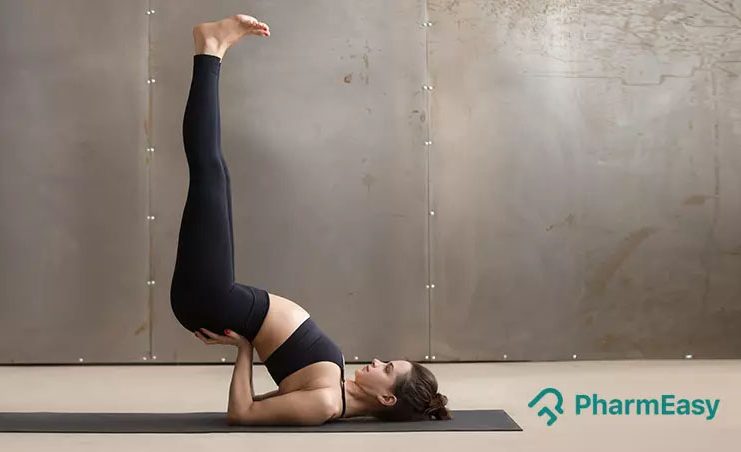
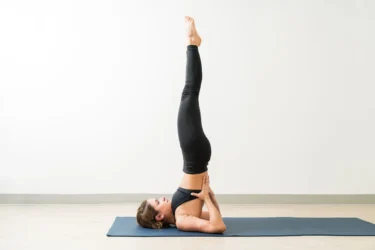
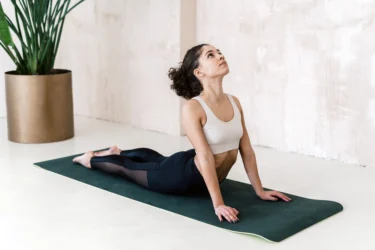
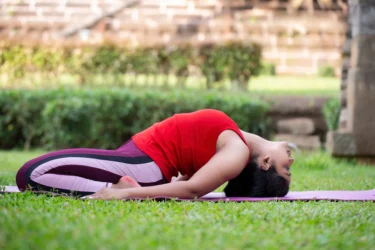


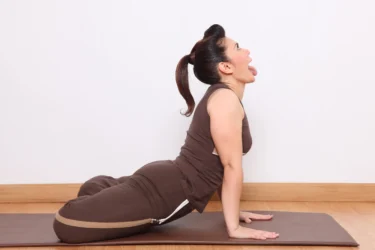
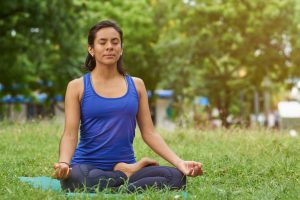

Comments